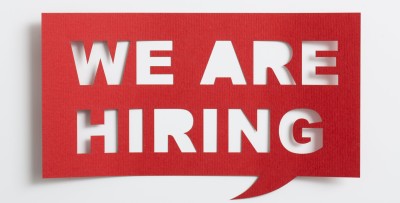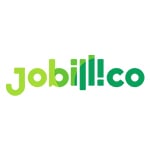The End of Recruiting as We Know It
 Publié le 17 August 2016
Publié le 17 August 2016
Over the last few years, you’ve heard again and again that the web has completely transformed consumers’ behavior. But did you know that this is also true for job seekers? This new trend is forcing employers to review their recruiting methods in order to adapt to the changing job market. Here are some pointers on how to recruit the best talent in this brave new world.
The web: a major driver of change
Let’s consider Quebec’s economic situation. The province is currently going through a period characterized by a low birth rate and low unemployment. This results in a shortage of talents. In this difficult economic context, how is an employer supposed to attract the best people to fill vacancies? This where the web revolution comes into play.
Today’s job seekers expect to find your business online and to be able to collect information about it instantly. More than 80% of them will do an online search on a business before deciding whether to apply or not. What this boils down to is this: unless they find something to convince them that they’ll like working for you, they’ll just move on says J.T. O’Donnell in “Why These 4 Companies are Getting Serious about Their Employer Brand”, an article published on fastcompany.com.
What job seekers want to find out is what you have to offer as an employer. Why would your business be picked out? This is what ultimately matters the most!
The web puts pressure on a business to display itself attractively in a way that matches the needs of jobseekers. One example among many: having videos or photos that showcase your work environment. If you fail to present your business in such a favorable light, you may end up missing your target even if you otherwise put the best message out there.
The end of traditional recruiting
The trigger to launch any recruiting effort has always been a job opening. Do you wait for an employee to leave your company before posting a job? If so, you’re among those who still use traditional methods.
Unfortunately, with the current workforce shortage, traditional recruiting doesn’t work as it used to. Let’s say that you post a Branch Director position in April. Let’s also imagine that the perfect candidate for the job starts looking for a job in February. Where were you then? A career website isn’t enough: the trick is to go looking for the best talent, to deploy a strategy that can reach out to them. Otherwise, you run the risk of missing out on that great hire that could have taken your business to the next level. After all, even the greatest shop located in a deserted back alley isn’t likely to draw in a lot of business, right?
Let’s make an analogy with online commerce. Thanks to the web, your store is open 365 days a year, 24-7. Your brand is positioned at all times. Whether a potential buyer is looking for a T-shirt in April or February, you are ready to meet the need. It’s the same with job seekers: you need to be ready to act when the perfect candidate happens to be looking for a job. But above all, you must position your employer branding at all times.
To achieve this you must communicate in a way that suits your business culture as well as the position you’re trying to fill. How often do we see job postings that contain little else than a barebones description of dull, impersonal tasks? Forget the usual clichés such as ‘under the supervision of…’ when you write up a job posting. It is far better to woo the potential applicant by describing your company values, the workplace and the social benefits you have to offer. Remember: people look for a place to work, not a boring list of tasks.
Your current employees are important in promoting your employer branding
The first thing to do to position your employer branding is to mobilize your current employees. You should aim to spend 80% of your efforts on your own employees and 20% only on jobseekers. Why? Because your employees will become the best ambassadors for your branding.
Each employee has a large audience on the social media (Facebook, LinkedIn, Twitter, etc.) and may decide to share your company’s output… or not. This represents an important showcase of whatever is happening in your business. According to Jeanne Meister, in ‘Consumerization Of HR: 10 Trends Companies Will Follow In 2016’, an article published on the Forbes website last January, contents shared by employees over the social media has been demonstrated to engage audiences 8 times more than contents shared by businesses and is shared again 25 times more.
The great impact of the social media on employer branding calls for internal strategies to mobilize your own staff and attract the best talent. In other words, it implies a complete overhaul of the way you recruit.
The fusion of marketing and HR has become a necessity
In order to create a coherent brand both within the company and for the public at large, marketing and HR need to work closely together or even fuse into a single effort. If you believe this isn’t worth the trouble, you’re making a big mistake.
Marketing is the perfect tool to target, attract and retain your clientele. In the case of recruiting, your clientele consists of both your current and future employees. Marketing should always used in mobilizing your employees and making them ambassadors of your brand.
You have probably heard the expression “The client is king”. Well, that could be rephrased to “The employee is king”! A happier employee is more productive, better committed and is therefore a better ambassador.
In the latest edition of Hop!, a Quebec tradeshow on retailing, I attended a conference by Alain Michaud, an associate at Price-Waterhouse-Cooper. According to him, “40% of consumers claim that the social media impact their purchasing choices”. This is even more the case for jobseekers. It’s vital for any business to make good use of the social media to promote its employer branding. That’s achieved by combining marketing and HR.
by Stéphane Jean and Laurier St-Yves
Biographical notes
Stéphane Jean has nearly 20 years of experience in business management and organizational communication. As Vice-President of Human Marketing at Jobillico, he uses his creativity alongside a youthful team, all with the same goal: make you happier at work! In addition to being a major partner of CQCD (Conseil Québécois du commerce de détail), Jobillico is the most visited job website in the Province of Quebec.







